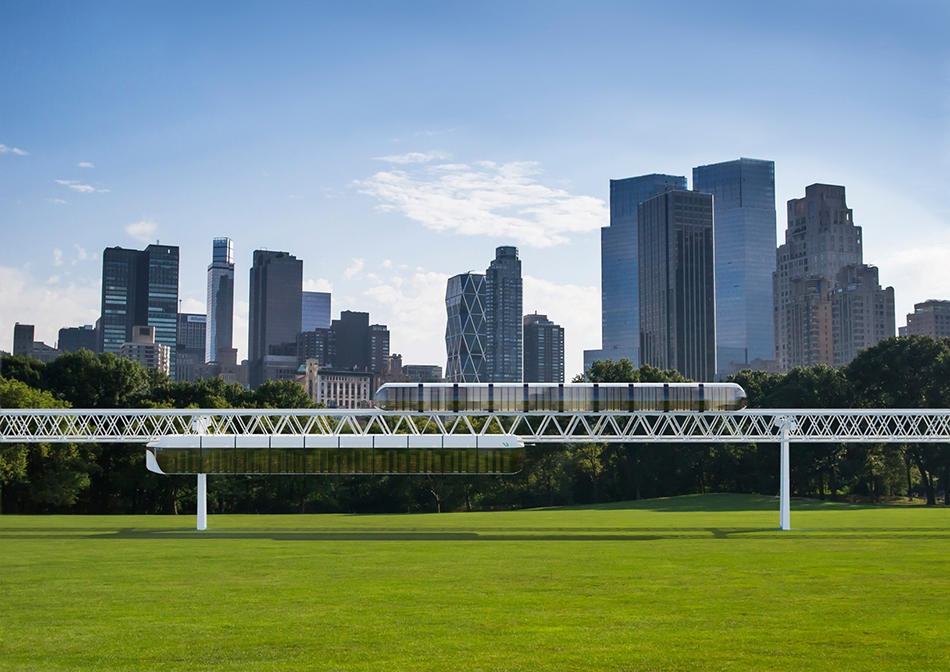UST Inc.’s General Director Featured In Forbes Publication: How Companies Can Promote a New High-Tech Product

Forbes, one of the world's most authoritative and well-known financial and economic magazines, has published an expert opinion by Nadezhda Kosareva, the General Director of Unitsky String Technologies Inc.
The article addresses the problem of promotion of high-tech developments. In addition, it focuses on practical recommendations that will ensure the effective implementation of new technically advanced inventions.
You can read more about the opinion of UST Inc.'s General Director in the article below.
How Companies Can Promote A New High-Tech Product
High-tech innovations can become tools for drastic transformation in many industries. But before that can happen, a new idea often has to navigate a challenging road to adoption. Firstly, the distrust of potential buyers can hinder the advancement of high-tech inventions. Secondly, conservatism in the market can complicate the implementation of innovations in many cases. Under such circumstances, the trajectory of such a product remains uncertain and carries many risks.
How can companies ensure the effective implementation of their innovative products? As the head of an international engineering company developing a complex industry-forming product, here are several of my practical recommendations that can become a guideline for many innovative business enterprises and allow them to take the first steps in commercializing their project.
Innovative Products That Faced Skepticism
As history shows, the development of new technologies does not always happen quickly and is often accompanied by many difficult stages. Innovations are the objects of discussion even before they are put into practice.
Let's look at the example of creating a portable wireless cell phone. Motorola, which was the first company to put the device on sale, spent more than 10 years and $100 million on the model development. Created by Martin Cooper, the cell phone met many skeptics over the years who doubted how far the technology would go. However, today, it's impossible to imagine the modern world without a mobile phone.
The development path of the rocket industry has also been long and difficult. In 1909, scientist Robert Goddard proposed the idea of using liquid propellents to fuel rockets. Five years later, he filed two patents, one of which was for multi-stage rockets and the other for using solid or liquid propellants, according to NASA. The scientist had voiced the idea of space exploration, however, many claimed that this was impossible. In 1920, an editorial in the New York Times sharply ridiculed Goddard's idea. Only half a century later, the American Apollo 11 spacecraft made a flight during which people landed on the moon’s surface for the first time.
Let's recall the history of aviation transportation. In 1895, British physicist and engineer Lord Kelvin declared that flying machines heavier than air was "impossible." Moreover, in October 1903, the New York Times published an article title “Flying machines which do not fly” and predicted that it would take between 1 million and 10 million years to develop such a type of transportation. However, just a few weeks later, the Wright brothers made a manned flight. As you can see, today, aviation transportation took one of the leading positions in terms of passenger traffic.
From Idea To Implementation
The risk of product rejection might be inherent in any company, but this problem is especially relevant for the high-tech market. I've found that people tend to have psychological barriers when perceiving technologically complex innovations. In this case, it is important to shift the emphasis in your promotions from the technical characteristics of the invention to its value to the audience.
For example, the company I’m in charge of develops transport and infrastructure complexes in an overpass design. In our marketing policy, we focus on fast, safe, economical and environmentally friendly transportation. We also emphasize the efficiency of our complexes in comparison to existing transport systems. This is how we form an understanding of the product among our target audience. In other words, explain how your invention will change your audience's lives and why it is necessary for the end consumer.
If we talk about specific marketing tools, the strategy of promoting a high-tech product to the market can be built through interaction with government agencies (if innovation can help them solve their tasks more effectively) and representatives of large businesses. Many technological companies seek to form a circle of lobbyists who can demonstrate the capabilities of the technology to potential customers. In parallel, it is important to use public relations tools as part of image promotion. This can be regular work with the news agenda, organization of press events and participation of speakers as experts in specialized conferences.
When there are big doubts about the introduction of high-tech developments, the science behind it becomes particularly relevant. Individual solutions can be proved by patents, implementation in the form of officially registered research and development, and placing scientific results in specialized publications. The technological solutions of a product can also be confirmed by existing R&D centers where the main aspects and advantages of innovation are shown in practice. The combination of these factors can help increase consumer loyalty to a high-tech product and create a positive image.
Five Tips To Promote New, Technically Sophisticated Products
- Be prepared for misunderstanding. Society is often wary of innovation. Your product may not be immediately appreciated and accepted by customers.
- Form inquiry and consumer interest in your invention. At the same time, ensure you're focusing on its worth measurement. Innovation must first have advantages that are understandable for a user.
- Play the long game. Complex technology projects should have long planning horizons.
- Find partners in the related areas. Namely, look for those to whom your product does not represent competition, but who can benefit from its implementation just like you.
- Demonstrate results. It is important to show the intermediate stages of development.
The promotion and commercialization of high-tech projects require considerable effort and can take longer than in the case of mass-consumption products. I must admit that in practice, there is no universal algorithm that guarantees that the innovation will be accepted by the buyer.
The role of a pathfinder imposes certain responsibilities and creates risks for business. However, as history shows, perseverance in the promotion of high technologies can eventually lead to a specific result. After all, they are ultimately the engine of progress and the source of intensive economic development.
More news

News
19 December 2023
Representatives of UST Inc. – on the peculiarities of negotiations in the regions
What kind of projects are we talking about? Are passenger or cargo transportation the most demanded by customers?

The commercial projects
12 December 2023
Current projects of UST Inc. in a new video about the company’s work in 2023
What regions does the company work in? How many projects is the company developing today?

News
1 December 2025
UST Inc.’s Partner in Nepal Resumes Negotiations on a Project in the Kathmandu Valley
The country’s government continues to show interest in modern transport solutions and their potential role in improving urban mobility.

